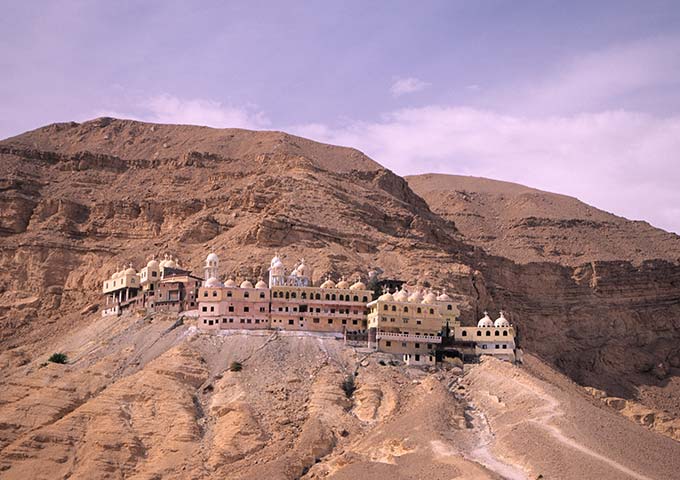The Coptic monastery of St Paul lies in Egypt’s eastern desert far from any other ancient ruins. St Paul is said to have been born to rich parents, however by the age of 16 both of his parents had died. Paul gave up his inheritance and gave his life to God, seeking refuge in a cave in the Eastern desert, where he lived until the age of 113. St Paul lived a life of extreme austerity. Paul, is said to have been fed half a loaf each day by a raven. At around 340AD the well-known desert monk St Anthony is said to have visited St Paul just before he passed away. The legend is that when Paul died, 2 lions dug his grave. St Anthony then buried Paul and designated him a saint.
It was above St Paul’s cave that the monastery you see today was built. It dates back to around the 5th Century.
The Monastery houses a tower, a refectory, mill, spring and 4 churches. 3 of these churches are in the ancient part of the monastery. The Church of St Paul (also known as the Cave Church) is located 3 metres below the current ground level of the monastery. The southern end of the church is the oldest part and is hollowed out of the cave that Paul is said to have lived. This part of the church probably dates back to around the 5th Century. St Paul’s body is also kept here inside a marble shrine.
St Paul’s is home to many illustrated manuscripts, including the Coptic version of the Divine Liturgy and the commentary of the Epistle of Saint Paul to Titus by John Chrysostom.
We can offer excursions to St Paul’s Monastery on any of our tours including Hurghada and on any tailor-made itineraries.













